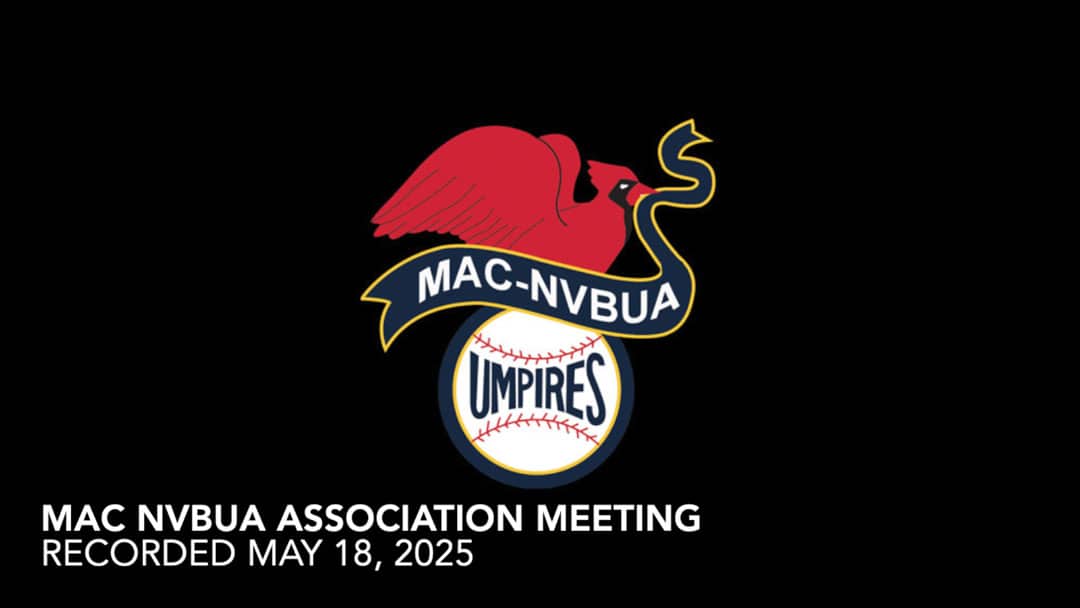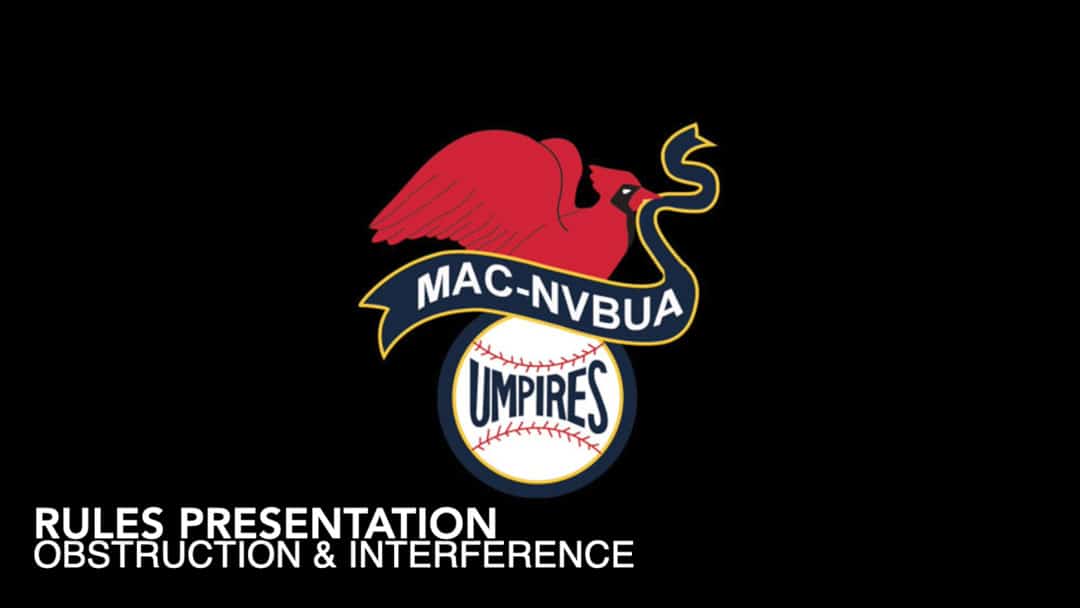Rule Interpretation Note
2024-002
Introduction
It’s not uncommon for a play to have more than one umpiring element that may need to be umpired. Our play below has three potential umpiring elements:
- Injury – Immediate vs. Delayed Dead Ball
- Force-out vs. Timing play
- Scoring
Situation
- R3, R2, two outs
- Batted ball to the outfield, Batter Runner (BR> injured coming out of the box, can’t advance to 1st
- R3 scores, R2 scores
- Outfield throws ball to 1st, BR is out
Umpiring Components of the Play
1. Injury – Immediate vs. Delayed Dead Ball
- If BR injury is judged not serious or life threatening the Umpire shall allow play to continue
- After making that judgement, if a Coach request time, it shall not be granted until all playing action has ended
- If the Coach interferes with the continuation of the play, Umpire shall determine appropriate penalties or base awards that would negate the premature stoppage of play
- If injury appears serious the Umpire should kill the play immediately to protect the Batter Runner
- If the Umpire kills the play, Umpire shall determine the logical outcome and appropriate Runner placement due to the stoppage of play
- If there was a premature stoppage of play, if the BR were judged to be unable to complete his advancement to 1st, the Crew would be correct to call the BR out. Since the out was a force out and the third out, no runs would score
- Rule 5-2-1-d and Rule 9-2 ART 3 are the rules that shall govern this phase of the play
- Rule 5-2-1-d…an umpire or player is incapacitated, except that if injury occurs during a live ball, time shall not be called until no further advance or putout is possible;
- 1. If there is a medical emergency or if, in the umpire’s judgment, further play could jeopardize the injured player’s safety, “Time” shall be called.
- Rule 9-2 ART 3… g. Make final decision on points not covered by the rules.
- Rule 5-2-1-d…an umpire or player is incapacitated, except that if injury occurs during a live ball, time shall not be called until no further advance or putout is possible;
- Safety is paramount… always be conservative. If in doubt, protect the Players, safety takes precedence over any play
2. Third out, force-out vs. Timing Play
- At the moment the Batter put the ball in play:
- A force play now exists on the BR only
- Since 1st base is unoccupied there is no force on R3 or R2
- Any play on the BR at first would be a force-out, not a timing play (in this play, any play on a BR after reaching 1st or a play on unforced R3 or R2 would result in a timing play)
- A force play now exists on the BR only
- Rule 2-24 ART 1 establishes the definition of a force-out
- Rule 2-24-ART. 1 . .. A force-out is a putout during which a runner who is being forced to advance is tagged out, or is put out by a fielder who holds the ball while touching the base toward which the forced runner is advancing. (9-1-1 for special case)
- By the way…a force-out can be either;
- The outcome of a play (as in this example) or
- An appeal (Base running infraction)
- Rule 8-4-1-f is the rule an governs the application of a force-out as it applies to a Batter Runner or Runner (baserunning) force-out plays
- Rule 8-4-1-f…after a dropped third strike (8-4-1 e) or a fair hit, if the ball held by any fielder touches the batter before the batter touches first base; or if any fielder, while holding the ball in the fielder’s grasp, touches first base or touches first base with the ball before the batter-runner touches first base: or…
- Other Force-out related rule references
- Rule 8-2-k…Third-out Base running Infraction – If a baserunning infraction is the third out, runs scored by the following runner(s) would not count. With two outs, if the base missed was the first to which the batter or runner was forced to advance, no runs would score. When a runner is legally returning after a fly ball has been caught, the runner can be put out by being tagged with the ball by a defensive player or merely by the defensive player with the ball touching the base occupied by the runner at the time of the pitch.
- Rule 9-1-ART 1… A runner scores one run each time the runner legally advances to and touches first, second, third and then home plate before there are three outs to end the inning. EXCEPTION: A run is not scored if the runner advances to home plate during action in the third out is made as follows:
- by the batter-runner before the batter-runner touches first base; or
- by another runner being forced out; or
- by a preceding runner who is declared out upon appeal because the runner failed to touch one of the bases or left a base too soon on a caught fly ball; or
3. Scoring
- Since the BR out at 1st is a force out AND it’s the third out, No RUNS score
Our crew allowed the play to continue and called the out at 1st and since that was the 3rd out, no runs scored
Norm Gordon
MAC/NV
Greg McEvoy
MAC/NV NFHS Rules Interpreter
Table of Contents
Issue #9 – May 12, 2025
Letters to the editors welcome at [email protected]

MACNV Association Meeting: May 18, 2025
Replay of the MAC-NV Association Meeting via Zoom on Sunday, May 18, 2025

Rules Presentation: Pitching
Rules Presentation on NFHS Pitching Rules pre-recorded by Greg McEvoy in May, 2025.

Rules Presentation: Obstruction & Interference
Replay of the Rules Presentation on Obstruction & Interference by Greg McEvoy held via Zoom on Sunday, April 27, 2025.